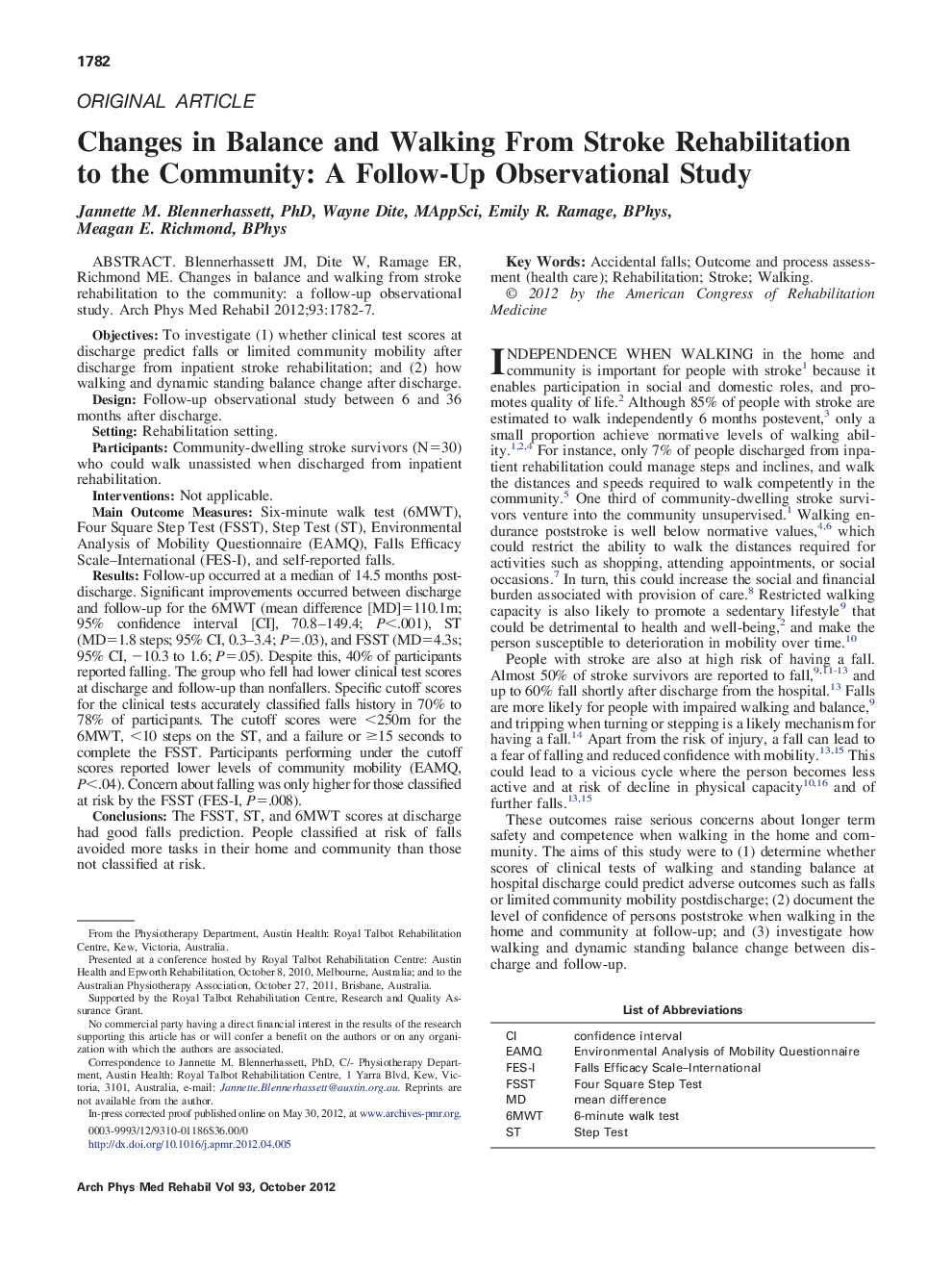| کد مقاله | کد نشریه | سال انتشار | مقاله انگلیسی | نسخه تمام متن |
|---|---|---|---|---|
| 3449782 | 1595720 | 2012 | 6 صفحه PDF | دانلود رایگان |

Blennerhassett JM, Dite W, Ramage ER, Richmond ME. Changes in balance and walking from stroke rehabilitation to the community: a follow-up observational study.ObjectivesTo investigate (1) whether clinical test scores at discharge predict falls or limited community mobility after discharge from inpatient stroke rehabilitation; and (2) how walking and dynamic standing balance change after discharge.DesignFollow-up observational study between 6 and 36 months after discharge.SettingRehabilitation setting.ParticipantsCommunity-dwelling stroke survivors (N=30) who could walk unassisted when discharged from inpatient rehabilitation.InterventionsNot applicable.Main Outcome MeasuresSix-minute walk test (6MWT), Four Square Step Test (FSST), Step Test (ST), Environmental Analysis of Mobility Questionnaire (EAMQ), Falls Efficacy Scale–International (FES-I), and self-reported falls.ResultsFollow-up occurred at a median of 14.5 months postdischarge. Significant improvements occurred between discharge and follow-up for the 6MWT (mean difference [MD]=110.1m; 95% confidence interval [CI], 70.8–149.4; P<.001), ST (MD=1.8 steps; 95% CI, 0.3–3.4; P=.03), and FSST (MD=4.3s; 95% CI, −10.3 to 1.6; P=.05). Despite this, 40% of participants reported falling. The group who fell had lower clinical test scores at discharge and follow-up than nonfallers. Specific cutoff scores for the clinical tests accurately classified falls history in 70% to 78% of participants. The cutoff scores were <250m for the 6MWT, <10 steps on the ST, and a failure or ≥15 seconds to complete the FSST. Participants performing under the cutoff scores reported lower levels of community mobility (EAMQ, P<.04). Concern about falling was only higher for those classified at risk by the FSST (FES-I, P=.008).ConclusionsThe FSST, ST, and 6MWT scores at discharge had good falls prediction. People classified at risk of falls avoided more tasks in their home and community than those not classified at risk.
Journal: Archives of Physical Medicine and Rehabilitation - Volume 93, Issue 10, October 2012, Pages 1782–1787